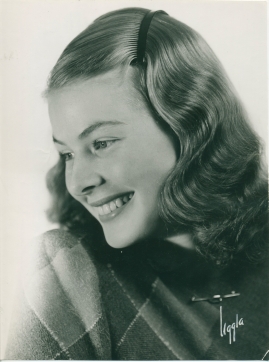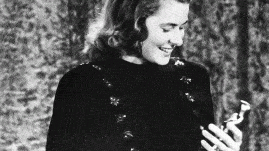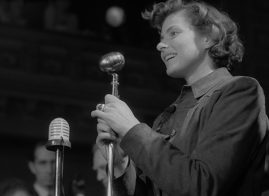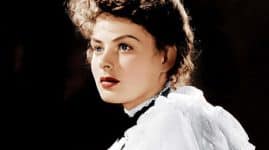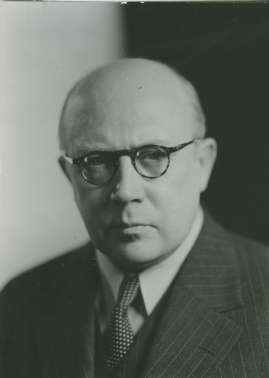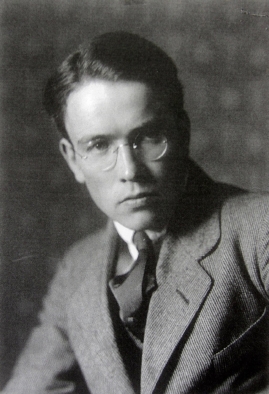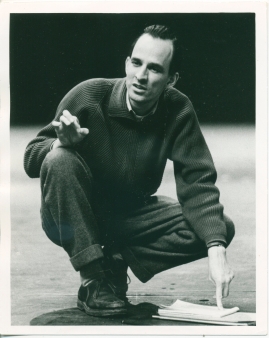Ingrid Bergman
Table of contents
- Basic facts
- Links and resources
- Biography
- Awards
- Films
- Original work
- Soundtrack listing
- Groups
Basic facts
Media (4)
| Cast |
|
|---|---|
| Singer | |
| Show all films | |
| Awards |
|
Biography
Swedish actress. Born in Stockholm. Died in London, England, Great Britain. Married 1950-1957 to director Roberto Rossellini. Mother of actress Isabella Rossellini.-Ingrid Bergman is one of the greatest film stars in history and, having won the award three times, is also the Swede with the most Oscars.An only child, she lost both her parents at an early age and grew up with relatives. At the age of 16 she was an extra in Landskamp ('International Game', Gunnar Skoglund, 1931) and two years later she won a place at the stage school of Stockholm's...
Links and resources
Biography
Swedish actress. Born in Stockholm. Died in London, England, Great Britain. Married 1950-1957 to director Roberto Rossellini. Mother of actress Isabella Rossellini.
-
Ingrid Bergman is one of the greatest film stars in history and, having won the award three times, is also the Swede with the most Oscars.
An only child, she lost both her parents at an early age and grew up with relatives. At the age of 16 she was an extra in Landskamp ('International Game', Gunnar Skoglund, 1931) and two years later she won a place at the stage school of Stockholm's Royal Dramatic Theatre, which she left a year later when she was offered her first film role.
Her debut film was Count of the Monk's Bridge (Munkbrogreven, Sigurd Wallén and Edvin Adolphson, 1935), inspiring the film critic "Robin Hood" to write: "Newcomer Ingrid Bergman is magnificent and assured". Appearing in four films that same year, her breakthrough was now beyond dispute.
During the 1930s Gustaf Molander was her most important director. And behind the camera for seven of her ten Swedish films between 1935 and 1940 was Åke Dahlqvist, a cinematographer who fully appreciated her talent and her remarkable aptitude for close-ups.
Molander's Swedenhielms Family (Swedenhielms, 1935), in which Bergman played a leading role, first screened in Venice, and three years later he was awarded there for another Bergman vehicle, A Woman's Face (En kvinnas ansikte). The latter film gave her scope for more nuanced acting and was an international success. A Hollywood remake was commissioned, albeit without Bergman. Carl Froelich's 1938 film for the UFA company in Germany, The Four Companions (Die vier Gesellen), marked her first role outside Sweden.
It was however Molander's melodrama Intermezzo from 1936 which led to her international breakthrough and Hollywood career. In it, she plays the piano accompanist and lover of an eminent violinist, played by Gösta Ekman. Film producer David O. Selznick made an American version (Intermezzo: A Love Story, Gregory Ratoff 1939) in which she reprised her role, this time with Leslie Howard.
Around the same time, Greta Garbo was making her last film appearances. Bergman was quickly given the opportunity to play more varied parts than Garbo, and during her first years in America her roles included a piano teacher, revolutionary heroine, the wife of a resistance fighter, psychologist, secretary, governess and nun. She was often praised for her naturalness, but soon grew tired of "nice girl" roles, to the extent that she told director Victor Fleming that she would rather play the part of a prostitute than Spencer Tracy's fiancée in Dr. Jekyll and Mr. Hyde (1941).
Her Hollywood career included three leading roles for Alfred Hitchcock (Spellbound, 1945, Notorious, 1946 and Under Capricorn, 1949), but it is for her role opposite Humphrey Bogart in Michael Curtiz' Casablanca (1942) that she will forever be best remembered.
As the 1940s drew to a close the restless star began to tire of her films - with the exception of her dream project Joan of Arc. Having seen Roberto Rossellini's neo-realist and ground-breaking Rome - Open City she wrote the director a letter saying that she would like to work with him. This led both to the leading role in Stromboli (1950) and their subsequent marriage. Her divorce from Aron Petter Lindström caused such a scandal in Hollywood that it would be seven years before she worked there again. Her films with her new husband found little favour with either audiences or critics, yet today they are widely respected by cineastes, especially the relationship drama Journey to Italy. In 1957 she sought a divorce from Rossellini.
She returned in triumph to Hollywood with Anastasia (Anatole Litvak, 1956) for which she received her second Oscar. From then on she was highly selective in her choice of roles.
In 1964, when Gustaf Molander asked her to play the lead in his contribution, based on a short story by Guy de Maupassant, to the episode film Stimulantia (1967), she agreed, giving Swedish audiences their first chance to hear her speaking her native language for 25 years. One of the other episodes was directed by Ingmar Bergman, who ten years later managed to repeat the feat by persuading her to play a Swedish pianist with a problematic relationship with her two daughters (Liv Ullmann and Lena Nyman) in Autumn Sonata (Höstsonaten). This turned out to be her last film for the cinema, and an artistic triumph for both (unrelated) Bergmans. She was nominated for an Oscar for the role. Even though their working together had been less than smooth, Ingmar Bergman hoped to cast her again. But when a suitable role came up in Fanny and Alexander (Fanny och Alexander), she was too ill to accept, and Gunn Wållgren eventually took the part of the matriarch.
In addition to her three Oscars she was nominated for a further four. She also won four Golden Globes. For her last role, as Golda Meir in the television film A Woman Called Golda, she was awarded a posthumous Emmy.
To mark the centenary of Ingrid Bergman's birth Stig Björkman made the documentary Ingrid Bergman in Her Own Words (Jag är Ingrid) which screened at the 2015 Cannes Film Festival. She also featured on the poster for the festival, and postage stamps in her honour were issued both in Sweden and the USA.
Jan Göransson (2015)
(translated by Derek Jones)
Awards
| Prize | Västtyskland | 1987 | (Das Grosse Verdienstkreuz) | ||
|---|---|---|---|---|---|
| Golden Globe | Hollywood | 1982 | (roll) | ||
| Prize | Stockholm | 1979 | (Illis Quorum-medaljen) | ||
| 1979 | (Variety Club International-priset) | ||||
| David di Donatello Award | Italy | 1979 | (roll) | ||
| Circle Prize | New York | 1978 | (roll) | ||
| Academy Award Nomination | Los Angeles | 1978 | (bästa kvinnliga huvudroll / Best Actress in a Leading Role) | ||
| National Society of Film Critics | 1978 | (roll) | |||
| National Board of Review | 1978 | (bästa skådespelerska) | |||
| Prize | Rome | 1977 | (Eleonora Duse-priset) | ||
| César | Paris | 1976 | (hederspris) | ||
| Academy Award of Merit | Los Angeles | 1975 | (bästa kvinnliga biroll / Best Actress in a Supporting Role) | ||
| BAFTA | London | 1975 | (bästa kvinnliga biroll / Best Supporting Actress) | ||
| National Board of Review | 1958 | (roll) | |||
| Circle Prize | New York | 1956 | (roll) | ||
| Academy Award of Merit | Hollywood | 1956 | (bästa kvinnliga huvudroll) | ||
| Bambi | 1954 | ||||
| 1953 | |||||
| Swedish Film Society Prize | Stockholm | 1953 | (guldplakett) | ||
| Bambi | 1952 | ||||
| 1951 | |||||
| Academy Award Nomination | Los Angeles | 1948 | (bästa kvinnliga skådespelare / Best Actress) | ||
| La Victoire | Paris | 1948 | (roll) | ||
| Circle Prize | New York | 1945 | (roll) | ||
| New York | 1945 | (roll) | |||
| Academy Award Nomination | Los Angeles | 1945 | (bästa kvinnliga skådespelare / Best Actress) | ||
| Academy Award of Merit | Hollywood | 1944 | (bästa kvinnliga huvudroll) | ||
| Academy Award Nomination | Los Angeles | 1943 | (bästa kvinnliga skådespelare / Best Actress) |
